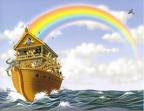April
Week 1: Toiletries, floss, toothpaste, razors, blades, shaving cream, sunscreen, saline, etc.
NON-ESSENTIAL EXPENSES
Non-essential expenses include most of the things we don't need, and most often includes many items where we waste money the most. It includes spending on clothing, books, movies, magazines, video games, dining out, gifts, snacks, candy, shoes, etc.
While clothing may be considered an essential expense, how much of it that we buy do we really need? If you want, create two separate categories for non-essential expenses. Place some of your clothing money into essential expenses, and the remainder into non-essential expenses.
Again, track your expenses for at least one month. This will give you insight into where your money is going, and also help you determine where you might be able to spend less and save more. By tracking your expenses, you will be able to better plan for your future needs.
After tracking your expenses, you will be able to set up an estimate of your budget, based on the expenses information you have been tracking.
Have you ever thought about what you would most like to buy when you begin to earn money? List your items:
At some stage in your life you will have to make decisions on how to manage your hard earned money. You will have to balance your spending and income. This is called “Budgeting”.
Drawing up a budget will help you make decisions.
You will need a list of “Needs” and “Wants”. Make a list of these, grouping them under the two headings “Needs” and “Wants” in the table below.
Try to put the most important ones at the top of the list.
Needs Wants
------------------------------------------------------------------------------------------------
Think about the difference between “Needs” and “Wants”.
7 years ago






No comments:
Post a Comment